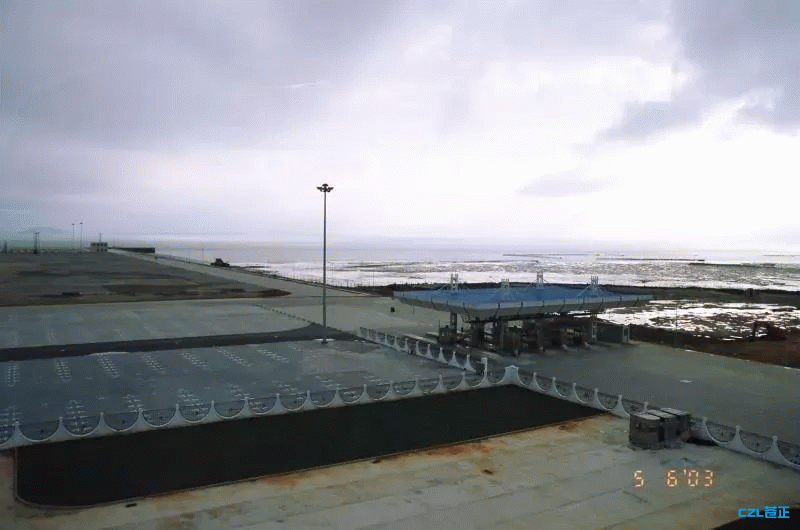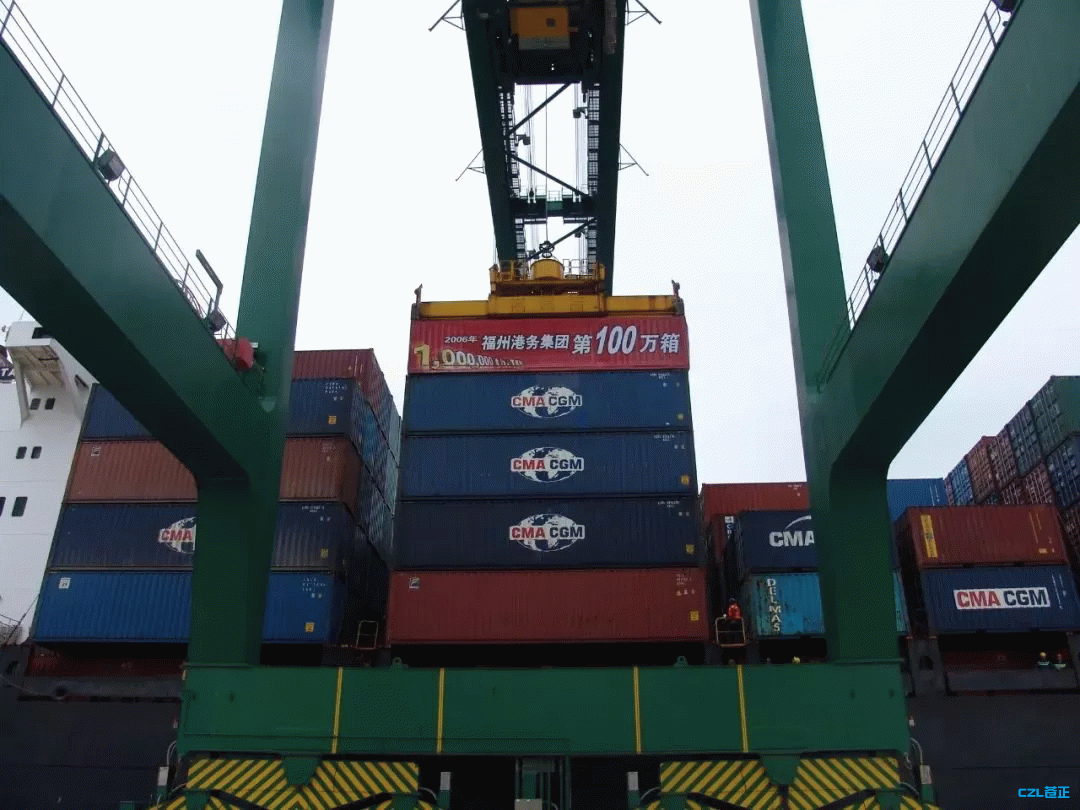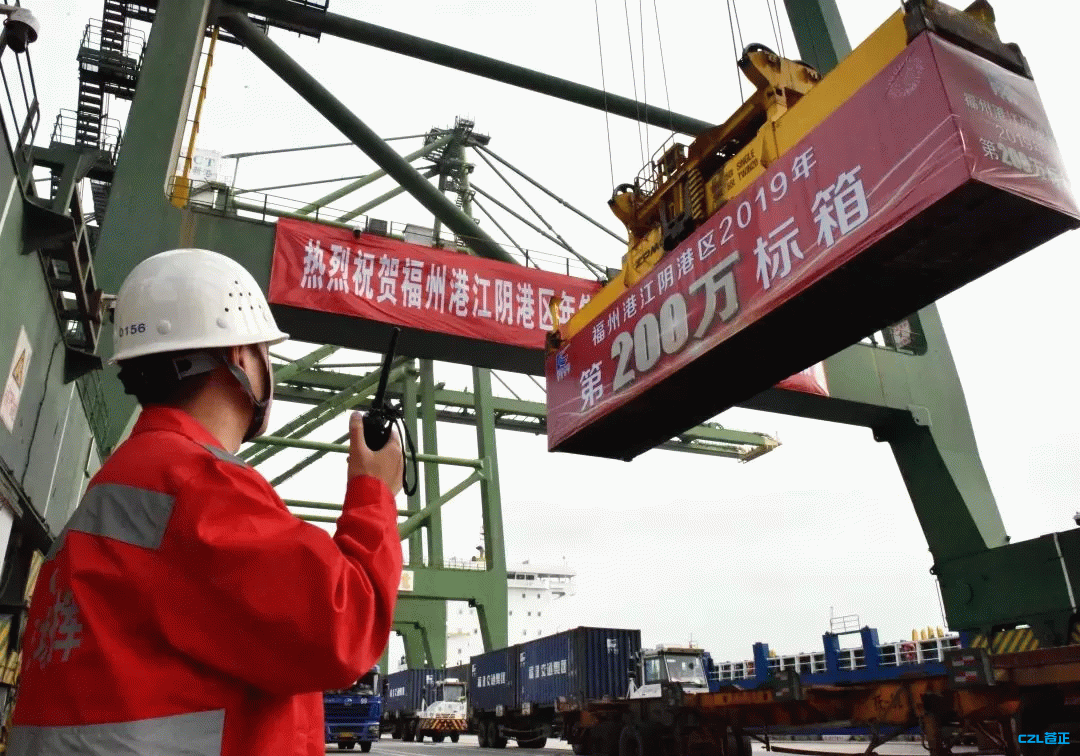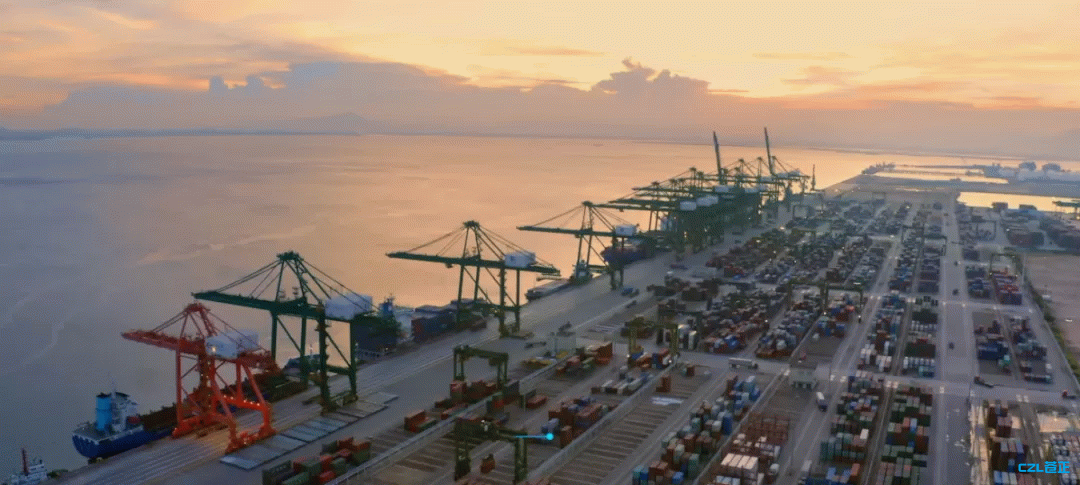Looking to the future, Fuzhou Jiangyin Port Area will uphold the historical mission of "pioneering and trying first", take serving the joint construction of the "Belt and Road" as the entry point and breakthrough point, build a global resource allocation function highland, and strengthen more hard-core port industry clusters.
In the 1990s, when General Secretary Xi Jinping was working in Fuzhou, he personally presided over the compilation of the "Fuzhou City's 20-Year Strategic Plan for Economic and Social Development" (referred to as the "3820" strategic project), which drew a beautiful blueprint for Fuzhou and established the general program and general strategy.
The "Maritime Fuzhou" strategy is an important part of the "3820" strategic project. In June 1994, the Fuzhou Municipal Party Committee and the Municipal Government issued the "Opinions on Building a "Maritime Fuzhou", the first coastal city in the country to issue a declaration of "marching to the sea".
Following this direction, in December 2002, the first large-scale container seaport in Fuzhou, Jiangyin Port, was successfully opened, opening a new chapter in promoting high-quality development in all directions.
Every bit of exploration and practice is a microcosm of the magnificent era.
After 20 years of continuous struggle, Jiangyin Port Area has kept in mind the instructions of the General Secretary, vigorously carried forward the spirit of “daring to be the first, fighting and winning”, worked hard, and moved forward courageously, developing a peninsula fishing village into an international port connecting the world.
In the 20 years of sailing on the Silk Road, Jiangyin Port has made good use of the overlapping policies of multiple zones such as the Special Economic Zone, the Pilot Free Trade Zone, and the Core Area of the 21st Century Maritime Silk Road, and has promoted deeper reforms and higher levels of opening up around serving and integrating into the new development pattern. It has handled a total container throughput of 20 million TEUs and has more than 60 domestic and foreign trade routes in the near and far oceans, including 13 "Silk Road Shipping" routes, creating an "upgraded version" of the shipping hub.
After 20 years of magnificent transformation, Fuzhou Port has made great strides in development with the goal of becoming a world-class deep-water port. It has promoted the integration of ports and logistics along the southeast coast, integrated the resources of the "water-road-rail" logistics channels, leveraged the advantages of multimodal transport, achieved full-process coverage, and enabled logistics channels to connect rivers and seas and sail into the deep blue.
The time coordinates are engraved with the footprints of struggle, and the journey of dreams shines like a rock. In the 20 years of pursuing dreams, generations of Fugang people have illuminated the way forward with the light of faith, tempered their will to struggle with the fire of belief, and fanned the sails of dreams with the wind of confidence, firmly grasping the fate of the port's development and progress in their own hands.
"With development in our hearts, truth in our hands and our feet on the right path, we are full of confidence and strength." The person in charge of Jiangyin Port said that over the past 20 years, with the strong support of governments at all levels, superior groups and relevant departments, Fugang Container Line has adhered to the essence of the "3820" project, kept pace with the development of the times, and been in sync with national strategies, contributing "Jiangyin Power" to accelerating the development of Fuzhou and Fujian.
In the future, Jiangyin Port Area will forge ahead with courage and determination, inherit and carry forward the "Maritime Fuzhou" strategy, set sail and forge ahead in the blue ocean, and make new contributions to accelerating the construction of Fuzhou as a modern international city and a new Fujian.
Riding the waves inspires the power of struggle
"Today, we are standing at the source of creating the future, so we should establish a forward-looking consciousness and dare to be the trendsetters of the times." This is written in the opening preface of the "Fuzhou City's 20-Year Economic and Social Development Strategic Plan" compiled in November 1992.
In 1983, the first container ship sailed out of Fuzhou Port, marking the beginning of the container transportation industry in Fuzhou Port. In 1984, Fuzhou was identified by the State Council as one of the first 14 coastal port cities in China. Since then, Fuzhou has stood at the forefront of China's opening up to the outside world, laying the foundation for Fuzhou Port's pursuit of internationalization today.
The Minjiang River surges with great momentum. In the 1990s, Xi Jinping, then secretary of the Fuzhou Municipal Party Committee, personally led the implementation of the "3820" strategic project and proposed strategic initiatives such as "Maritime Fuzhou", which had a significant and far-reaching impact on the development of Fuzhou Port at the turn of the century.
It was a passionate era, and Fuzhou Port has since embarked on a fast track of development. This moment has been engraved as the spiritual origin and coordinates for the people of Fuzhou and Hong Kong to strive forward.
In 1998, Fuzhou Port, with a more open attitude, introduced PSA International Port Group for the first time to jointly build a specialized container terminal, creating a precedent for Sino-foreign joint ventures in the construction of major port projects in Fujian Province.
Qingzhou Port is the starting point for the development of container transportation in Fuzhou Port. By 2007, the peak year was handling nearly 800,000 TEUs.
In 2000, with great anticipation, the construction of the No. 1 berth of Jiangyin Port started, which sounded the clarion call for a new round of construction of "Maritime Fuzhou" in Fuzhou Port. Fuzhou Port resolutely connected with the national strategy and promoted the construction of Jiangyin deepwater port.
In December 2002, Jiangyin Port was successfully opened. It was the first large-scale container seaport in Fuzhou’s history and opened a new “milestone” for the development of Fuzhou Port.
The high sails of the clouds activate the power of progress
Facing the sea and marching forward, the people of Fugang explore and move forward all the way, continuing to write a brilliant chapter in the development of Fuzhou Port.
-
In 2003, Fuzhou Port’s first ocean-going container route was opened in Jiangyin Port Area;
-
In 2004, Jiangyin Port Area became a national first-class open port;
-
In 2006, the one millionth container of Fuzhou Port was lifted at berth No. 2 of Jiangyin Port; the container throughput of Fuzhou Port broke the 1 million TEU mark for the first time;
-
In 2013, the integrated operation of Fuzhou Port's container terminal not only strengthened Fuzhou Port's container business strength, but also laid a solid foundation for the contiguous development of Jiangyin Port's container terminals and the development of an international shipping hub. Jiangyin Port strives to play a greater role in the process of building a world-class port.
-
In 2014, the Jiangyin Port Sea-Rail Intermodal Transport Project was officially launched, and the sea-rail transport was seamlessly connected, which opened up huge space for the high-quality development of the logistics industry of Fuzhou Port. The development of Fuzhou Port entered a period of rapid development of diversified businesses.
-
In 2019, the annual container throughput of Jiangyin Port exceeded 2 million TEUs for the first time.
After 20 years of development, the comprehensive strength of Jiangyin Port Area has become increasingly stronger.
The port area has handled a total container throughput of 20 million TEUs and completed a bulk cargo throughput of over 10 million tons. It has actively integrated into the "Belt and Road" construction and fully leveraged the advantages of "multi-zone superposition". It now has more than 60 long-distance and short-distance domestic and foreign trade routes, including 13 "Silk Road Shipping" routes, covering major ports around the world and connecting to major domestic ports.
The new international land-sea trade channel and sea-rail transport will achieve leapfrog development.
The sea-rail transport channel from Jiangyin Port to the central and western regions of China, Southeast Asia and Europe has been opened, and the "Maritime Silk Road" and "Land Silk Road" have been seamlessly connected, making it an international shipping hub port for the southeast coast that radiates the "Belt and Road" with "bidirectional sea and land". A comprehensive "port-shipping-land" service system has been established, forming a new pattern of coordinated development of multiple business sectors of the port-specific logistics park, with the port as the core and logistics as the link, taking into account sea-rail transport, vehicle logistics, bulk cargo, cold chain logistics, cross-border e-commerce, and oversized logistics, and the economic hinterland of the port has been further expanded.
Infrastructure construction has made rapid progress.
With an annual designed handling capacity of 5 million TEUs, 8 deep-water berths and a total shoreline length of 2,623 meters, it has become the largest single-unit contiguous container port in Fujian Province; the ability to berth 200,000-ton ultra-large container ships 24 hours a day, 365 days a year gives Jiangyin Port the strength to become an international port.
The integration of Hong Kong and the city is moving forward with firm steps.
As one of the core ports of the "21st Century Maritime Silk Road" and the largest single contiguous container port in Fujian Province, Jiangyin Port relies on the construction of the "Maritime Silk Road", gives full play to its location advantages, and cooperates with major shipping companies in the world to make the port a major port for the city's foreign exchanges and a support for the layout of key industries and the development of development zones.
Around leading enterprises such as Wanhua Chemical, Zhongjing Petrochemical, and Tianchen Yaolong, a professional chemical new materials park with integrated upstream and downstream industries and intensive resource allocation has been formed behind Jiangyin Port. The "1+2" industrial cluster, with chemical new materials as the leading factor and biomedicine and clean energy equipment manufacturing as supplements, is accelerating its rise and has formed a unique advantage of "port + industry".
With the integration of industry and city, Jiangyin Port Area continues to make efforts to inject blue energy into urban development and continue to write a new chapter of the "Maritime Silk Road".
Chasing light and waves inspires the spirit of hard work
Now embarking on a new journey, Jiangyin Port Area has once again raised the banner of reform and innovation, and its development momentum is growing stronger.
At present, Jiangyin Port is transforming towards the development goal of building a sustainable green and smart port at a faster pace. The port has carried out a pilot application of fully automated terminals to promote the reengineering of terminal intelligent operation processes and the application of energy-saving and emission reduction technologies.
From big to strong, from high-speed growth to high-quality development, the people of Fujian and Hong Kong have drawn up a grand blueprint for the second take-off and sent out the strongest voice to carry out reform and innovation to the end.
The goal is clear and the action is strong. We aim to build a world-class port with first-class facilities, first-class technology, first-class management and first-class services, build an important gateway hub for Fujian Province's opening up and cross-strait exchanges, and provide strong support for building "Maritime Fujian" and promoting high-quality development of the marine economy.
The truth is simple, and the key is to take action.
Looking to the future, Jiangyin Port Area will uphold the historical mission of "pioneering and trying first", take serving the joint construction of the "Belt and Road" as the entry point and breakthrough point, build a global resource allocation function highland, and strengthen more hard-core port industry clusters.
Fuzhou Port, shining brightly with the light of sea expansion, will also ride the wind and waves and rush towards the future in the tide of the 21st Century Maritime Silk Road!
Original text from:https://mp.weixin.qq.com/s/uGVeU4JFsmdYH1-k8cQQvQ







